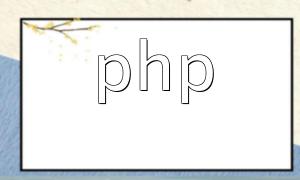In web development, handling date and time data is a common task, and timestamps are one of the most widely used representations of time. PHP, as a powerful server-side language, offers multiple convenient functions to easily convert timestamps into human-readable date formats. This article introduces several practical methods for converting timestamps to date formats in PHP with examples.
The date() function is one of the most frequently used functions in PHP for formatting dates and times. It can convert a timestamp into a readable date string according to a specified format. Here's a simple example:
$timestamp = time(); // Get the current timestamp
$date = date('Y-m-d H:i:s', $timestamp); // Convert to Y-m-d H:i:s format
echo $date;
In this example, the time() function retrieves the current Unix timestamp, and date() formats it into a human-readable date and time format.
If you prefer a more flexible and object-oriented approach, PHP’s DateTime class provides powerful tools for handling date and time data. It allows setting timestamps, formatting output, and managing time zones. Here’s how to use it:
$timestamp = time(); // Get the current timestamp
$date = new DateTime();
$date->setTimestamp($timestamp);
echo $date->format('Y-m-d H:i:s');
In this example, a new DateTime object is created, the timestamp is set using setTimestamp(), and the formatted date is displayed using format().
The strftime() function converts a timestamp into a localized date and time string based on a specified format. It’s useful when you need locale-aware date outputs. Here’s an example:
$timestamp = time(); // Get the current timestamp
$date = strftime('%Y-%m-%d %H:%M:%S', $timestamp);
echo $date;
This method works similarly to date() but supports localized date outputs, such as month names and weekdays in different languages.
By using the date() function, DateTime class, or strftime() function, developers can easily convert timestamps to formatted date strings in PHP. Each method has its advantages — date() is ideal for quick formatting, DateTime is more flexible and object-oriented, and strftime() is perfect for localized output. Choosing the right method can improve both code quality and efficiency when handling time data in PHP applications.
We hope this guide helps you better understand how to convert timestamps to date formats effectively using PHP.









